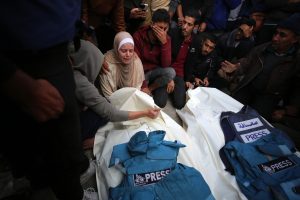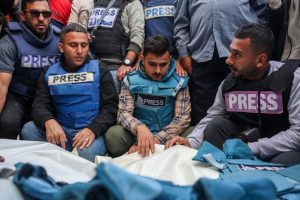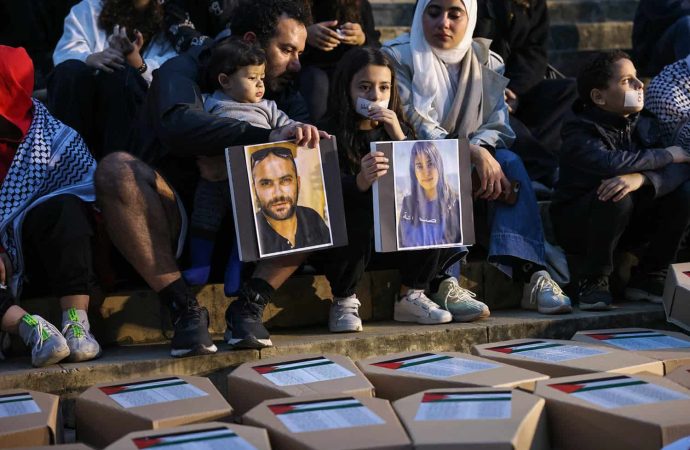Introduction In the heart of conflict, journalists in Gaza face unparalleled challenges as they strive to report on the realities of life amidst unrest. Explore the hidden plight of these journalists, shedding light on the dangers, restrictions, and the resilience that defines their commitment to truth-telling. The Hidden Dangers: Reporting Amidst Conflict Journalists in Gaza
Introduction
In the heart of conflict, journalists in Gaza face unparalleled challenges as they strive to report on the realities of life amidst unrest. Explore the hidden plight of these journalists, shedding light on the dangers, restrictions, and the resilience that defines their commitment to truth-telling.
The Hidden Dangers: Reporting Amidst Conflict
Journalists in Gaza operate in an environment where reporting on the ground truth comes with unprecedented risks and challenges. The hidden dangers they navigate on a daily basis reveal the harsh realities they face.
Key Challenges:
- Physical Dangers: Journalists often find themselves in the line of fire, risking injury or death while covering events in conflict zones.
- Censorship and Restrictions: Stringent censorship and restrictions imposed by various authorities limit the scope of reporting, curbing the journalists’ ability to provide a comprehensive picture.
Insights from International Human Rights Lawyer Dr. Aisha N. Ahmed
To provide a legal perspective on the challenges faced by journalists in Gaza, we turn to Dr. Aisha N. Ahmed, an esteemed international human rights lawyer specializing in press freedom and conflict zones. “The plight of journalists in Gaza underscores the complex intersection of press freedom and conflict. These journalists operate in an environment where their dedication to truth-telling is met with severe restrictions and dangers. Understanding their struggles is crucial to addressing the broader issues surrounding freedom of the press in conflict zones.”
Unseen Restrictions: Navigating Censorship

This image is taken from google.com
Journalists in Gaza confront not only physical dangers but also a pervasive atmosphere of censorship and restrictions that cast a shadow over their work.
Key Restrictions:
- Government Control: Authorities tightly control media outlets, limiting their independence and ability to report objectively.
- Threats and Intimidation: Journalists often face threats and intimidation, pushing them towards self-censorship to ensure personal safety.
- Limited Access: Restricted access to certain areas hinders journalists from fully covering events, leading to incomplete narratives.
Comparative Analysis: Press Freedom in Conflict Zones
To contextualize the challenges faced by journalists in Gaza, let’s conduct a comparative analysis of press freedom in conflict zones:
Press Freedom Comparative Analysis
| Key Element | Before Reporting in Gaza | After Reporting in Gaza |
|---|---|---|
| Independence | Striving for unbiased reporting | Contending with external pressures |
| Safety Measures | Limited protective measures | Navigating increased risks |
| Freedom of Movement | Restricted access to certain areas | Facing heightened limitations |
Resilience Amidst Adversity: Journalists’ Unwavering Commitment

This image is taken from google.com
Despite the formidable challenges, journalists in Gaza demonstrate remarkable resilience and an unwavering commitment to their role as truth-bearers.
Demonstrations of Resilience:
- Risking Personal Safety: Journalists knowingly risk personal safety to document and share the realities of conflict.
- Innovative Reporting: Despite restrictions, journalists find innovative ways to disseminate information, utilizing various platforms and technologies.
- Advocacy for Press Freedom: Some journalists actively advocate for press freedom, both locally and on the international stage, highlighting the importance of their work.
The Global Impact: Why it Matters
The challenges faced by journalists in Gaza extend beyond the region, influencing global perspectives and understanding of the ongoing conflict.
Global Consequences:
- Information Void: Restrictions on journalism contribute to an information void, hindering the global community’s understanding of the complexities of the conflict.
- Human Rights Concerns: The limitations on press freedom raise broader human rights concerns, as the world may be unaware of critical issues affecting the civilian population.
- International Advocacy: Journalists in Gaza become symbols of the broader struggle for press freedom, prompting international advocacy efforts to address their challenges.
The Call for Solidarity: Supporting Journalists in Gaza
As journalists in Gaza persist in their pursuit of truth amidst adversity, there is a growing call for global solidarity and support to amplify their voices and advocate for press freedom in conflict zones. Stay tuned for ongoing updates and calls to action as we navigate the unseen plight of journalists in Gaza.
















